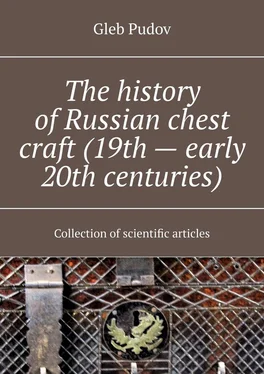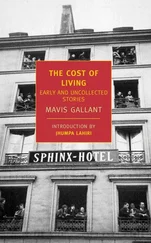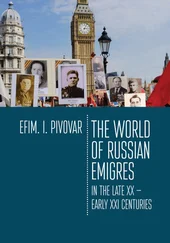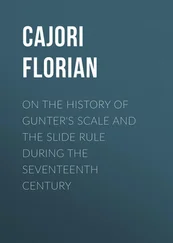Gleb Pudov - The history of Russian chest craft (19th – early 20th centuries). Collection of scientific articles
Здесь есть возможность читать онлайн «Gleb Pudov - The history of Russian chest craft (19th – early 20th centuries). Collection of scientific articles» — ознакомительный отрывок электронной книги совершенно бесплатно, а после прочтения отрывка купить полную версию. В некоторых случаях можно слушать аудио, скачать через торрент в формате fb2 и присутствует краткое содержание. ISBN: , Жанр: russian_contemporary, на английском языке. Описание произведения, (предисловие) а так же отзывы посетителей доступны на портале библиотеки ЛибКат.
- Название:The history of Russian chest craft (19th – early 20th centuries). Collection of scientific articles
- Автор:
- Жанр:
- Год:неизвестен
- ISBN:9785005637178
- Рейтинг книги:5 / 5. Голосов: 1
-
Избранное:Добавить в избранное
- Отзывы:
-
Ваша оценка:
- 100
- 1
- 2
- 3
- 4
- 5
The history of Russian chest craft (19th – early 20th centuries). Collection of scientific articles: краткое содержание, описание и аннотация
Предлагаем к чтению аннотацию, описание, краткое содержание или предисловие (зависит от того, что написал сам автор книги «The history of Russian chest craft (19th – early 20th centuries). Collection of scientific articles»). Если вы не нашли необходимую информацию о книге — напишите в комментариях, мы постараемся отыскать её.
The history of Russian chest craft (19th – early 20th centuries). Collection of scientific articles — читать онлайн ознакомительный отрывок
Ниже представлен текст книги, разбитый по страницам. Система сохранения места последней прочитанной страницы, позволяет с удобством читать онлайн бесплатно книгу «The history of Russian chest craft (19th – early 20th centuries). Collection of scientific articles», без необходимости каждый раз заново искать на чём Вы остановились. Поставьте закладку, и сможете в любой момент перейти на страницу, на которой закончили чтение.
Интервал:
Закладка:
The collection of the Cleveland Museum of Art contains a portrait of Sir Anthony Mildmay (around 1590—1593) by the English painter Nicholas Hilliard (around 1547—1619) 83 83 Inv. №1926.554.
. To the right of the person being portrayed there is a large black chest with a sloping lid, upholstered with iron strips arranged as a checked one. On the front side there are three figured iron hinges. Among the furnishings of the tent of an English aristocrat, the chest occupies one of the main places.
By the 18th—19th centuries, when chests gradually fell into disuse in the higher social strata, their appearance changed. Like the other changes mentioned above, this was also reflected in painting. An idea of such chests can be given by numerous canvases and drawings by the famous Norwegian artist Adolf Tidemand (1814 —1876), stored in the National Museum of Art, architecture and design (Oslo). For example, on the «The old pantry in Vik» (1867) 84 84 Inv. № NG. M. 00302—029. Vikøy is a village in the county of Hordaland.
four large peasant chests are depicted. They are decorated with paintings (this is the traditional Norwegian «rosemåling») and iron figured strips. They have sloping lids and high carved plinths. Similar products are kept in many museums in Scandinavia.
If we are talking about the countries of Eastern Europe, then it is necessary to mention the altar image «The adoration of the Magi» (1514) from the Peter and Paul Church of the village of Drysviaty, Braslav district, Vitebsk region 85 85 Located in the Museum of Ancient Belarusian Culture of the Institute of Art History, Ethnography and Folklore of Aational Academy of Sciences of Belarus (Помнікі мастацкой культуры Беларусі. – Мінск: Беларусь, 2012, С. 18, 19).
. One of the characters is holding a wooden casket upholstered with figured iron strips. The casket is depicted in great detail, the master obviously had some kind of sample before his eyes. The walls of the product are decorated with carved ornaments, consisting of floral scrolls and plot scenes. The gable cover is devoid of decorations. This image can serve as reliable evidence of the early acquaintance of Belarusian craftsmen with European products.
Another type of art, where images of chests and caskets are found, was engraving. Especially often German, Dutch and French artists and engravers turned to this plot. On the engraving of Albrecht Dürer «Saint Jerome» (1511) 86 86 Stored in the British Museum (London), inv. № E,3.170.
among the many furnishings of the cell there is a small chest with a flat lid and a figured metal mask. It is placed on a high carved plinth. On the side walls there are figured cast handles. And on the engraving «A young couple and an old woman with a piggy bank» (1589 – 1607) 87 87 Stored in the Ruijksmuseum (Amsterdam), inv. № RP-P-1884-A-7880.
Jan Sanredam depicts a box with a trapezoidal lid in which coins are stored. The box is upholstered with iron strips and possibly cloth. On the front side there is a metal mask. During the period when the engraving was created, many similar caskets were made in the Netherlands, so the artist probably had a sample in front of him. The engraving of Abraham Boss «The Footman Following the Decree of 1633» 88 88 Stored in the Ruijksmuseum (Amsterdam), inv. № RP-P-2009-1053.
depicts a chest in which a servant puts his master’s suits. This is a large chest with a sloping lid, upholstered with fabric. From the inside and along the edges it is reinforced with iron strips. The front wall is narrowed down. On the sides there are molded handles of a simple shape.
Images of chests were found not only in painting and engraving, but also in miniature. On one of the sheets of the book «Très belles Heures» (c. 1400) 89 89 Stored in Palazzo Madama (Turin), sheet 93 v.
, previously owned by the younger brother of Charles V, Duke de Berry, there is a scene of the birth of John the Baptist and below it is «The Baptism of Christ». In the first scene the main role is played by the landscape, but the second one represents the Flemish interior. Among the wooden furniture and metal utensils, a «sarcophagus» chest is depicted. This is one of the most ancient types of chests. It is interesting to note that it completely repeats the image of the above-mentioned work by Hieronymus Bosch (except that it has two headings, and not one, like a merchant’s chest). Storing various household items it stands opposite the bed of the woman in labor. Considering that after the creation of this miniature, almost a century passed before the appearance of Bosch’s painting, it must be stated that the «sarcophagus» type of chests is not only one of the most ancient, but also one of the most stable types of chest products. Probably, this was facilitated by the simplicity of design and the harmony of proportions, found by the masters quite early 90 90 See more: Csilléry K.K. Le coffre de charpanterie // Acta ethnographica Academiae scientiarum Hungaricae. – T. 1, fas 1—4. – Budapest: Maruar tudományos Akademia, 1950.
.
On one of the sheets of the manuscript collection (c. 1457—1530), stored in the British Library 91 91 Inv. No. Royal MS 18 D II.
, three chests are shown. Red one has straight walls and a sloping lid, upholstered with strips of iron; on the front wall there is a figured metal plate. The other represents a typical travel «bag». Such things will later be done in many European countries and in Russia. The third type is the so-called «chest – teremok». It is painted red and upholstered with iron strips. There are no decorations on the examined items. The dimensions of the products are unlikely to correspond to the real ones. The miniature testifies not only to the wide distribution of chest products in England of that period, but also to their diversity.
We must also mention a page from a book (c. 1480) 92 92 Stored in the Austrian National Library (Vienna), code. 1857, fol. 43v. Dimensions: 22x16 cm.
, owned by Mary of Burgundy, on which the artist Nicholas Spiering depicts one of the scenes of the Passion of Christ. Below it there are images of various objects, among which you can see a small turquoise box. It has a high sloping lid and straight walls (no legs). The surfaces of the box are most likely upholstered with velvet, placed under thin iron strips, the ends of which resemble the shape of lilies. On the front wall there is a rectangular face made of brass (internal lock). The hinge is located on the lid. The inside of the box is either painted or also upholstered with velvet (red). Since the lid is open, you can see what was stored in the box. These are women’s items, a scarf and jewelry. Despite the fact that this miniature cannot be used to judge the design of the casket, its shape and decoration can be seen quite clearly.
II
In Russia, as in European countries, chest products became widespread very early. One of the first mentions is found in «Izbornik of Svyatoslav» (1076) 93 93 Словарь русского языка XI—XVII вв. АН СССР. Институт русского языка. Вып. 8. – М., 1981, С. 172.
. In Novgorod birch-bark documents of the 12th century, there are references to chests and boxes. 94 94 The birch-bark letter No. 429 mentions a large chest of the 1st half of the 12th century, in which clothes and women’s jewelry were stored, letters No. 438 and 533 speak of boxes of the 12th-14th centuries (Арциховский А. В., Янин В. Л. Новгородские грамоты на бересте (из раскопок 1962 – 1976 гг.). – М., 1978, С. 35—36, 41—42, 135). On the exposition of the NGOMZ there is a birch bark document No. 846 (dated from the 2nd quarter – half of the 12th century), which mentions a casket with books, and No. 403 (XIV century), which refers to a box.
. Images of large chests that are used as a bench are found in miniatures of the Radziwill Chronicle (end of the 15th century). There you can also see a chest with a sloping lid and a chest with a gable roof 95 95 Радзивилловская летопись. – [Факс. воспроизведение рукописи, хранящейся в БРАН]. – СПб.: Глагол; М.: Искусство, 1994, С. 116, 147, 181, 239 об.
. Russian icon painting did not avoid images of chests. On the icon «Christ the Almighty on the throne, in 28 scenes» by Semyon Spiridonov Kholmogorets 96 96 The collection of the Russian Museum, inv. № ДРЖ-2772.
, originating from Yaroslavl and dating from about 1682, a large chest is depicted. It has straight walls and a sloping lid, upholstered with tin sheets with a picturesque ornament consisting of plant motifs. The front side and the cover are divided into two equal parts, side walls are divided into four parts. This image indicates that already in the 17th century there were chests of the type that would become widespread in Russia much later.
Интервал:
Закладка:
Похожие книги на «The history of Russian chest craft (19th – early 20th centuries). Collection of scientific articles»
Представляем Вашему вниманию похожие книги на «The history of Russian chest craft (19th – early 20th centuries). Collection of scientific articles» списком для выбора. Мы отобрали схожую по названию и смыслу литературу в надежде предоставить читателям больше вариантов отыскать новые, интересные, ещё непрочитанные произведения.
Обсуждение, отзывы о книге «The history of Russian chest craft (19th – early 20th centuries). Collection of scientific articles» и просто собственные мнения читателей. Оставьте ваши комментарии, напишите, что Вы думаете о произведении, его смысле или главных героях. Укажите что конкретно понравилось, а что нет, и почему Вы так считаете.












